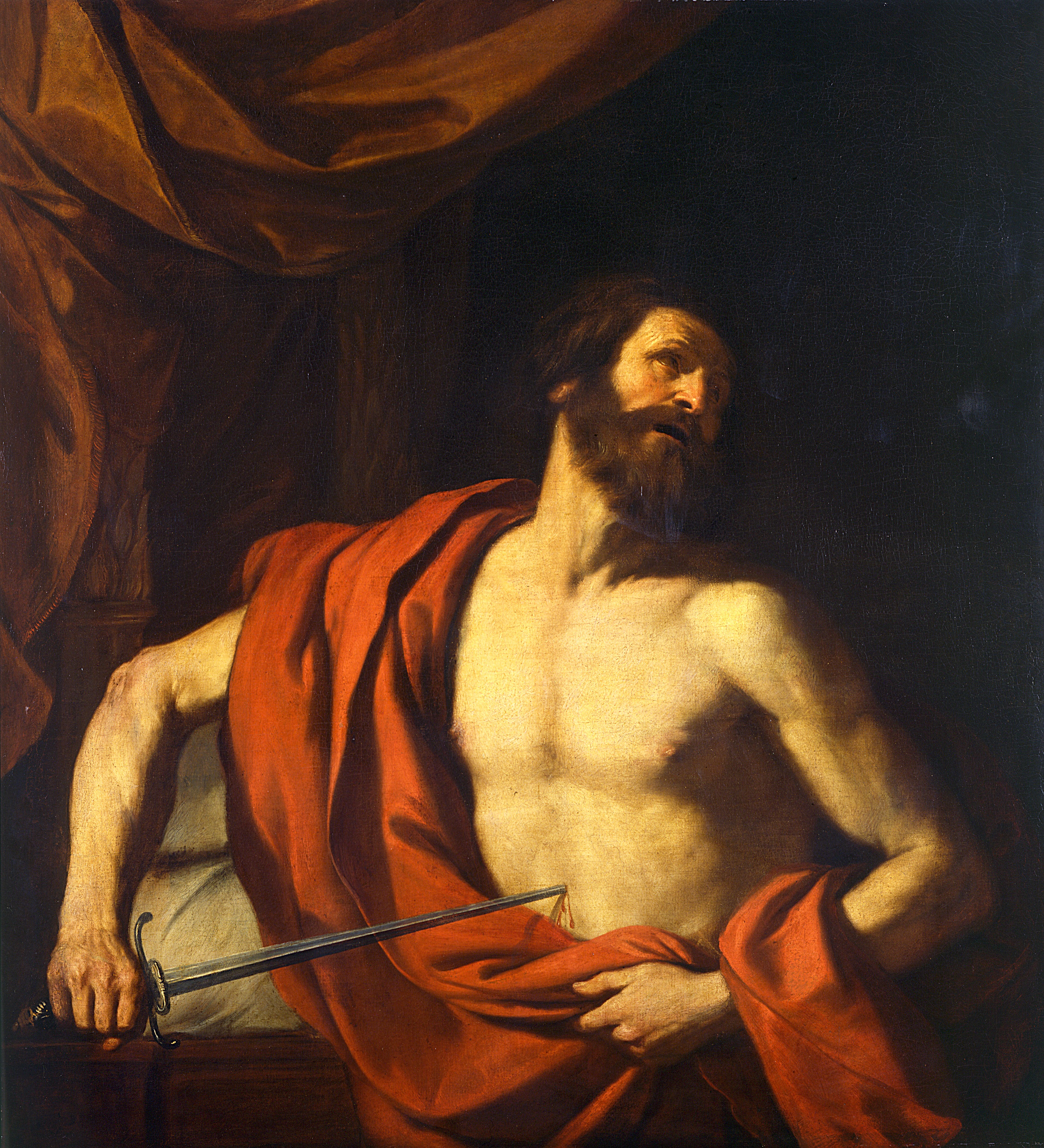
Click here to view image
Giovan Francesco Barbieri, detto il Guercino (Cento, 1591 - Ferrara, 1666)
Oil on canvas, cm. 135 x 119
Genova, Musei di Strada Nuova - Palazzo Rosso, inv. PR 61 REMOVED DUE TO EXHIBITION
From 1874 in the collections by donation of Maria Brignole - Sale De Ferrari, Duchess of Galliera
From the artist’s book of accounts we learn that the painting depicting The suicide of Cato the Uticense dates back to 1641. The subject is that handed down by Plutarch, according to which Cato, a man rigid to the principles of stoicism and supporter of Pompey at the time of the civil war, knowing that the cause of these was lost, He killed himself by thrusting into his belly the sword that had been previously taken from him in vain.
In the seventeenth-century culture the character embodied the ideal of man coherent to himself to the point of facing death fearlessly: a moralizing reading certainly valid in this case, given that the client of the work (a lawyer from Perugia resident in Rome) ordered the painter another subject similar to this, the Death of Seneca, which was later dispersed.




